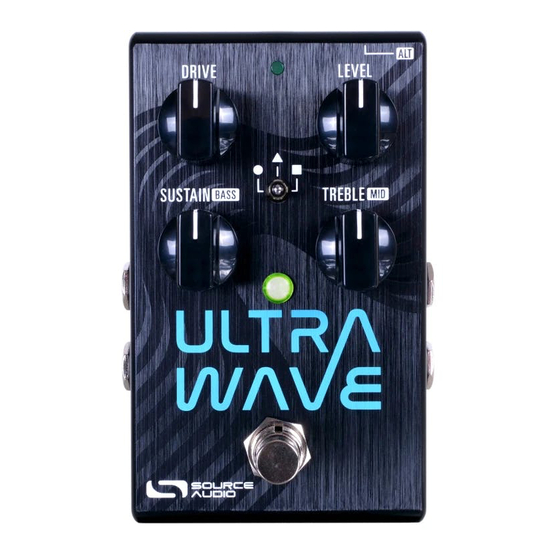
Table of Contents
Advertisement
Quick Links
Welcome
Thank you for purchasing the Source Audio Ultrawave Multiband Processor. The Ultrawave is the
first of its kind: a flexible multiband processing toolbox. Through the combination of band splitting,
exotic distortion curves, multi-band tremolo, compression, morphing, and flexible stereo processing,
the Ultrawave opens doors to a wide range of new sounds for guitar, bass, synth, and other musical
instrument applications. The Neuro Desktop and Mobile editors provide an intuitive graphical
environment to unlock the power of the Ultrawave, allowing users to create and share a growing
library of sounds.
At the core of the Ultrawave is multiband separation, distortion, and EQ. In the 1970s music
technologist Craig Anderton created a 4-band distortion tool. It was noted for lessening
intermodulation artifacts when playing complex chords, but the concept was left largely unexplored.
In 2007 Bob Chidlaw took the basics of multiband processing and added cutting-edge foldback
distortion curves, which were relatively unknown at the time. When implemented on a powerful
Analog Devices DSP chip, the Source Audio Multiwave Distortion pedal was born. The Ultrawave
starts where the Multiwave left off and leverages more than a decade of Source Audio know-how
and dramatic increases in DSP power. The Ultrawave is the ultimate expression of multiband
processing in a pedal. We hope you will enjoy our creation, and that it will provide years of
inspiration and fun.
Table of Contents
Ultrawave User Guide
Ultrawave Multiband Processor User Guide
1
Advertisement
Table of Contents

















Need help?
Do you have a question about the Ultrawave and is the answer not in the manual?
Questions and answers